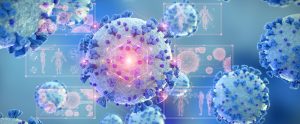Life Magnetics Simplifies Wastewater Testing to More Accurately Monitor Emerging Diseases

Imagine if your morning weather report also warned you if flu was making the rounds, or warned you if your local mosquitos were carrying the Zika virus. Wastewater testing for viral diseases is becoming a powerful new tool to monitor communities for emerging and dangerous diseases, but the methods are still difficult and expensive. C·Prep RNA extraction kits from Life Magnetics have made wastewater surveillance more practical by reducing cost, speeding analysis, and improving sensitivity.
RNA is extremely fragile which is a problem for collection and transportation. Remember how during the COVID-19 pandemic widespread at-home PCR testing was never available? And the COVID-19 mRNA vaccines needed cold storage? RNA is simply difficult to transport and store. Dr. Conway, who manages wastewater testing at Central Michigan University, noted that when looking for viruses in wastewater, the signal degraded 10% for every 6 hours of transport and freezing the sample halved the signal. RNA is simply difficult to handle. The estimated cost for processing a wastewater sample is $850, which is 10x the cost of a COVID-19 test. The process also takes 3 days, which is also far longer than a standard COVID-19 test.
COVID-19 Is Not The Only Infectious Disease To Worry About
The focus might be on COVID-19 right now, but nearly every state in the US has at least one infectious disease that the CDC is worried about. In the south we have the Zika virus. In the north there are tick-borne illnesses and Eastern Equine Encephalitis or EEE which can impact livestock. Over time, wastewater testing and monitoring will become the “go-to” to detect and monitor emerging and existing diseases.
Students at the Rotham School of Business in Toronto as part of the Creative Destruction Lab program interviewed over 60 labs and all of them indicated that they thought wastewater testing would be our go-to method for monitoring pandemics in the future. It will almost be like a weather report, utilizing wastewater testing to warn communities of mosquito-born, tick-born, and viral diseases. Tracking these diseases through wastewater monitoring will tell us when seasonal flu is making the rounds. It will also tell us when rarer diseases are present in the population such as foot-in-mouth disease. Government agencies can then use this information to deploy resources effectively and avoid shutting down entire states when only specific communities are at risk.
How Does Graphitic Carbon Help?
Life Magnetics, Inc. partnered with Central Michigan University to deploy graphitic carbon in wastewater testing. The graphene coating developed by Life Magnetics can pull out and stabilize RNA from wastewater with just CaCl2 added. Calcium is a harmless food additive. To release the RNA, EDTA is added. This is another food additive that’s cheap and safe. This is so simple and so safe that large volumes can be easily processed. Central Michigan University was taking 50 ml samples of water. However, this is so easy they could use 500 ml samples instead and this increased the sensitivity 10x. As a result, Central Michigan University’s testing costs were driven down from $850 per test to $100 per test and their testing time was cut from 3 days to 60 minutes. All with a 10x improvement in performance. That’s making wastewater surveillance look like a powerful new tool.
Interested in Life Magnetics’ Wastewater RNA Extraction Kits?
Our carbon prep RNA isolation kits dramatically improve RNA extraction from dilute solutions like COVID-19 detection in wastewater. Learn more here.

Kevin graduated from the University of Michigan where he received a Doctor of Philosophy in Materials Chemistry with a focus on Semiconductor Surface Chemistry. In 2015, Kevin started Life Magnetics, Inc. with Saravana Murthy. Kevin developed the manufacturing method used to create Life Magnetics’ products and currently oversees manufacturing and business development. Kevin also has five peer-reviewed publications, and seven issued patents.